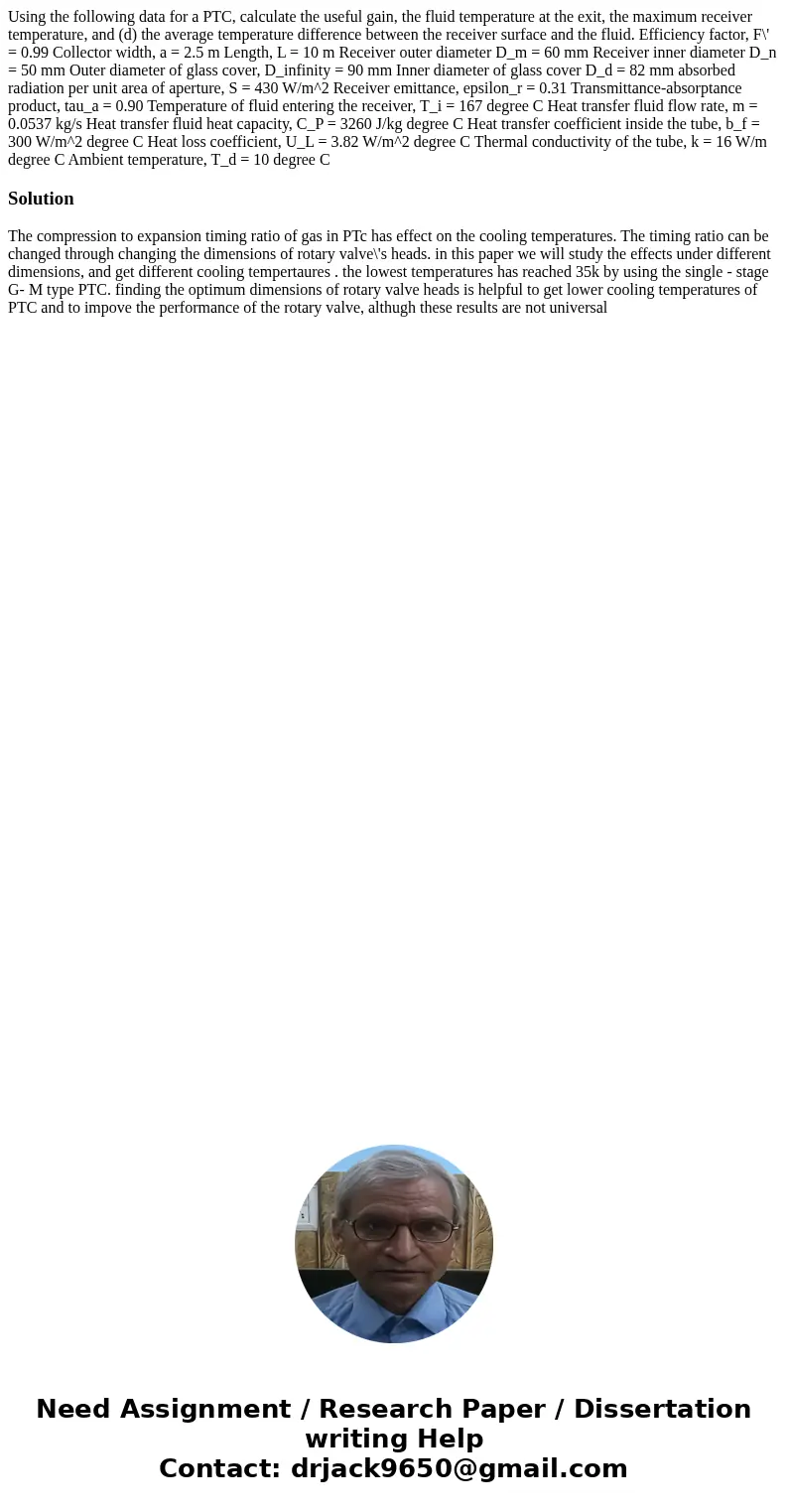Using the following data for a PTC calculate the useful gain
Using the following data for a PTC, calculate the useful gain, the fluid temperature at the exit, the maximum receiver temperature, and (d) the average temperature difference between the receiver surface and the fluid. Efficiency factor, F\' = 0.99 Collector width, a = 2.5 m Length, L = 10 m Receiver outer diameter D_m = 60 mm Receiver inner diameter D_n = 50 mm Outer diameter of glass cover, D_infinity = 90 mm Inner diameter of glass cover D_d = 82 mm absorbed radiation per unit area of aperture, S = 430 W/m^2 Receiver emittance, epsilon_r = 0.31 Transmittance-absorptance product, tau_a = 0.90 Temperature of fluid entering the receiver, T_i = 167 degree C Heat transfer fluid flow rate, m = 0.0537 kg/s Heat transfer fluid heat capacity, C_P = 3260 J/kg degree C Heat transfer coefficient inside the tube, b_f = 300 W/m^2 degree C Heat loss coefficient, U_L = 3.82 W/m^2 degree C Thermal conductivity of the tube, k = 16 W/m degree C Ambient temperature, T_d = 10 degree C
Solution
The compression to expansion timing ratio of gas in PTc has effect on the cooling temperatures. The timing ratio can be changed through changing the dimensions of rotary valve\'s heads. in this paper we will study the effects under different dimensions, and get different cooling tempertaures . the lowest temperatures has reached 35k by using the single - stage G- M type PTC. finding the optimum dimensions of rotary valve heads is helpful to get lower cooling temperatures of PTC and to impove the performance of the rotary valve, althugh these results are not universal

 Homework Sourse
Homework Sourse